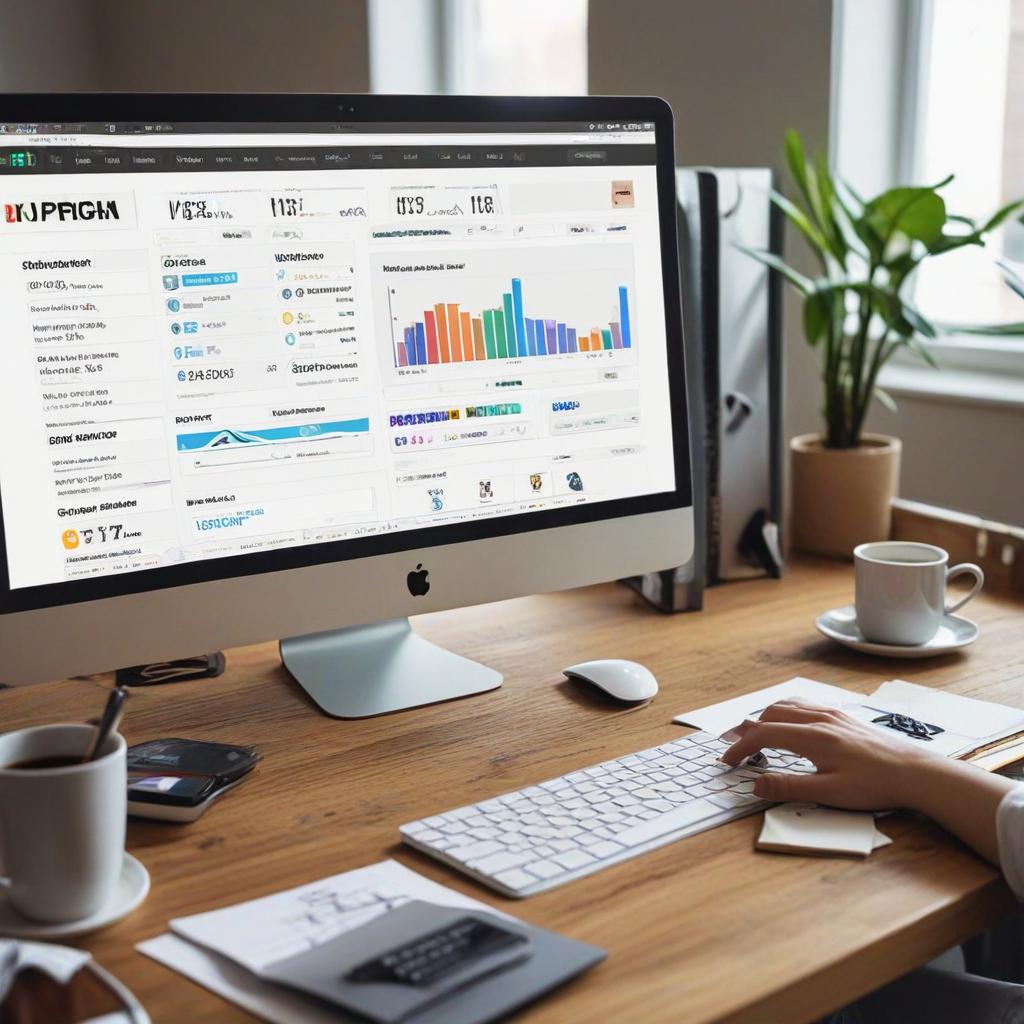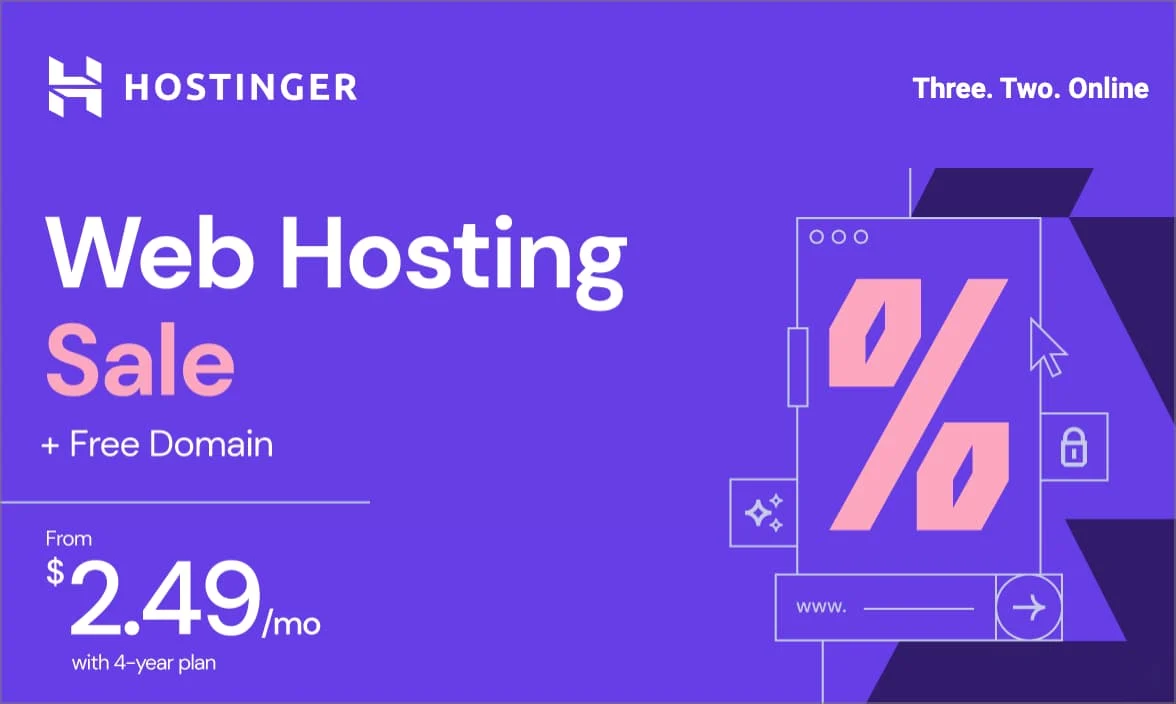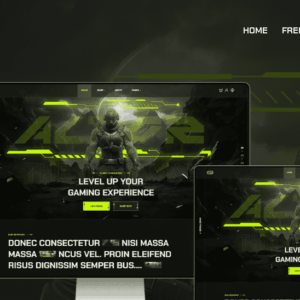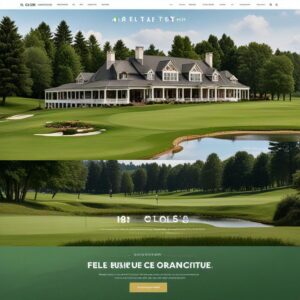
How to Price Your Web Design Services for Maximum Profit
Price Your Web Design Services
1. Introduction: Cracking the Web Design Pricing Code
Setting the right price for your web design services can feel like navigating a maze. Charge too little, and you risk undervaluing your expertise and leaving money on the table. Charge too much, and you could scare off potential clients. It’s a balancing act that many freelancers and agencies struggle with.

But how do you determine what “fair” is? What factors should you consider? How can you ensure your web design fees reflect the value you bring while remaining competitive in the market for freelance rates?
Table of Contents
2.Factors to Consider
Experience and Expertise: The Beginner vs. Seasoned Pro Spectrum
Think of it like this:
- Beginner Web Designers: These are typically newer to the field, with less than 2 years of experience. They might still be building their portfolio and refining their skills. Their rates will typically be lower, as they’re gaining experience and establishing a client base. Expect to find beginners charging around $20-$50 per hour or offering project-based packages for a few hundred dollars.
- Mid-Level Web Designers: These designers have a few years under their belts, a growing portfolio, and a solid grasp of design principles and industry tools. They’re comfortable handling more complex projects and may have developed some specializations. Rates for mid-level designers typically fall in the $50-$100 per hour range, or they might offer project packages between $1,000-$5,000.
- Experienced Web Designers: These are seasoned pros with extensive portfolios, a strong reputation, and deep expertise in various aspects of web design. They can tackle highly complex projects, often with quick turnarounds. Their rates reflect their experience and the value they bring. Expect experienced designers to charge $100-$200+ per hour or offer project-based pricing starting at $5,000 and going much higher.
Specializations and Skills: The Premium of Niche Expertise
In the world of web design, certain skills command a premium:
- E-commerce Specialists: If you’re building an online store, you’ll want a designer who understands the nuances of e-commerce platforms (like Shopify or WooCommerce), payment gateways, product presentation, and user experience optimized for conversions. This specialization justifies higher rates.
- UX (User Experience) Designers: A great UX designer can make or break a website’s success. They focus on creating intuitive navigation, clear calls to action, and a seamless user journey. This expertise is highly sought after and often comes with a higher price tag.
- Front-End Development: Designers proficient in coding languages like HTML, CSS, and JavaScript (and perhaps frameworks like React or Angular) can create custom, interactive elements and bring more dynamic functionality to websites. This full-stack skillset is valuable and often reflected in their fees.
- Specific Industry Knowledge: A designer with experience in your specific industry (e.g., healthcare, real estate, non-profits) can bring valuable insights and tailor the design to your target audience, which can be worth the investment.
Project Scope and Complexity: The Cornerstone of Pricing
The scale and intricacy of your website project will be the biggest drivers of the final cost. As a freelance web designer, I structure my fees to reflect the unique needs of each project. Here’s how different website types typically affect pricing:
- Basic Websites (Informational/Brochure): These focus on presenting information about your business, services, or products. They usually have a few pages, simple navigation, and limited functionality. Think of them as your online business card. Freelance rates for this type might range from $[Price Range for Basic Websites] depending on design complexity and content needs.
- Portfolio Websites: If you’re a creative professional (artist, photographer, designer), a portfolio site is your showcase. It requires a visually appealing design, image galleries, and possibly interactive elements. Web design fees for portfolios often start around $[Price Range for Portfolio Websites].
- E-commerce Platforms: Online stores are the most complex websites. They need product catalogs, shopping carts, secure payment gateways, inventory management, and potentially customer accounts. Expect higher freelance rates for e-commerce, starting at $[Price Range for E-commerce Platforms] and going up significantly based on the size of your catalog and desired features.
Features and Functionality: Every Bell and Whistle Adds Up
Each additional feature you add to your website increases the complexity and thus the cost. Some examples that impact web design pricing include:
- Custom Design vs. Templates: Unique designs require more time and creative effort than adapting existing templates, affecting freelance rates.
- Content Management System (CMS): A CMS like WordPress or Shopify makes it easier for you to update content, but integrating and customizing them adds to the project scope and web design fees.
- Interactive Elements: Things like animations, parallax scrolling, or advanced contact forms all require extra development time and may raise freelance rates.
- E-commerce Functionality: As mentioned, online stores with features like product filtering, related product suggestions, or abandoned cart recovery are more complex and costlier.
Content Creation: Words Matter (And They Cost)

High-quality content is crucial for a successful website. If you need help with writing or editing website copy, that’s an additional service I offer. My freelance rates for content creation are usually calculated per word or per page, depending on the depth of research and editing required.
Factors Affecting Freelance Web Design Rates
Beyond project scope, several other factors influence what I charge as a freelance web designer:
- Experience Level: Seasoned designers with proven track records typically command higher web design fees.
- Location: Freelancers in areas with a high cost of living may charge more.
- Demand: If a designer is highly sought after, their rates may be at a premium.
- Client Budget: Sometimes, I can tailor a package to fit a client’s budget by adjusting the scope or features.
Transparency is Key
I believe in clear communication when it comes to pricing. I’ll provide you with a detailed breakdown of the estimated costs for your project before we start, so there are no surprises down the line.
Client Budget: Matching Your Rates to Their Means
Understanding your target market’s budget is crucial. Not all clients have the same financial resources:
- Startups & Small Businesses: They might prioritize affordability, seeking value-driven web design packages or simpler designs. Your rates for these clients might be lower to attract their business.
- Established Businesses: They may have larger budgets and value the expertise of a seasoned professional. You can potentially charge higher rates here, highlighting the unique value and ROI you offer.
- Enterprise Clients: They typically demand complex websites with extensive features and customization. These projects often command premium web design fees.
How to Research Client Budget:
- Market Research: Look at competitor pricing in your target market to get a sense of what clients are willing to pay.
- Direct Conversations: During initial consultations, gauge the client’s budget expectations. Be prepared to offer different package options or a la carte services to accommodate different budgets.
Geographic Region: Location, Location, Location!
Where you’re located and where your clients are based significantly impact pricing:
- Cost of Living: Web designers in major metropolitan areas like New York or London often charge higher rates to account for higher living expenses.
- Market Competition: If you’re in a region with a high concentration of web designers, you might need to be more competitive with your pricing to stand out.
- Local Client Base: If your target market is primarily local, tailor your rates to reflect the local economy and what clients in your area are accustomed to paying.
How to Incorporate Keywords Naturally:
Here are a few examples of how to weave in those keywords while discussing your pricing:
- “My web design fees are flexible and can be tailored to fit the client’s budget, whether you’re a startup looking for an affordable website or an established business seeking a premium design.”
- “As a freelance web designer based in [Your Location], my rates are competitive with the local market, and I offer customized packages to suit different client budgets.”
- “I’ve adjusted my web design pricing to reflect the geographic region I serve, ensuring I provide fair and competitive rates for my clients.”
Let me know if you’d like more examples or specific scenarios!

Pricing Models for Web Design: Finding the Right Fit
Choosing the right pricing model is crucial for freelance web designers and clients alike. Each model has its own advantages and drawbacks, and the ideal choice often depends on the project’s scope, complexity, and the client’s preferences.
1. Hourly Rates: Flexibility and Transparency
- Pros:
- Fair Compensation: Hourly rates ensure you’re paid for every hour invested in the project, accounting for revisions, unexpected challenges, and client communication.
- Flexibility: Hourly rates accommodate projects with evolving scopes or unclear requirements, as you bill based on actual time spent.
- Transparency: Clients receive detailed invoices showing how their investment is utilized, fostering trust and understanding.
- Cons:
- Budget Uncertainty: It can be difficult for clients to estimate the total project cost upfront, potentially leading to budget concerns.
- Potential Inefficiency: Some clients may perceive hourly rates as incentivizing designers to work slower, though professionalism should always be a priority.
2. Project-Based Fees (Fixed-Price Packages): Predictability and Simplicity
- Pros:
- Budget Certainty: Clients know the exact cost upfront, making budgeting easier and reducing financial surprises.
- Simplified Process: Once the scope is defined, there’s less administrative overhead with invoicing and time tracking.
- Client Preference: Some clients simply prefer a fixed price for peace of mind.
- Cons:
- Scope Limitations: Fixed-price projects can be challenging if the client requests significant changes mid-project, potentially requiring renegotiation.
- Underestimating Effort: Designers risk undercharging if they underestimate the time and effort required to complete the project.
3. Value-Based Pricing: Aligning with Client Goals
- Pros:
- Focus on Results: Value-based pricing shifts the conversation from time spent to the value delivered to the client’s business.
- Higher Earning Potential: If your work demonstrably increases revenue, leads, or brand awareness, you can command premium freelance web design rates.
- Client-Centric: This model encourages designers to deeply understand client goals and tailor solutions accordingly.
- Cons:
- Subjectivity: Determining the “value” of a website can be subjective and may require strong negotiation skills.
- Client Hesitation: Some clients may be hesitant to embrace value-based pricing if they are accustomed to traditional models.
4. Retainer Models: Ongoing Support and Predictable Revenue
- Pros:
- Recurring Revenue: Retainer models provide designers with a stable income stream and predictable monthly web design fees.
- Client Priority: Clients on retainer often receive priority support, faster turnaround times, and proactive website maintenance.
- Building Relationships: Retainers foster long-term relationships with clients, leading to repeat business and referrals.
- Cons:
- Scope Creep: Without clear boundaries, clients may request excessive work beyond the retainer’s scope, requiring additional fees or renegotiation.
- Client Commitment: Retainers require an ongoing commitment from both parties, and finding the right fit is crucial.
Choosing Your Path
The best pricing model for your freelance web design business depends on your experience, target clients, and project preferences. Many designers use a combination of models, such as project-based fees for initial website design and retainers for ongoing support.
By understanding the pros and cons of each model, you can confidently price your services, attract the right clients, and build a sustainable web design career.
Let me know if you’d like to delve deeper into any specific pricing model or discuss strategies for setting your freelance web design rates!
Pricing Strategies
Finding Your Sweet Spot in the Web Design Market
As a freelance web designer, setting the right price for your services is crucial. You need to balance attracting clients with valuing your skills and time. Let’s delve into some strategies and resources:
Researching Market Rates: The Key to Competitive Pricing
- Freelance Platforms: Your Window into the Gig Economy
- Upwork and Fiverr: These platforms are a treasure trove of information. Browse through project listings and proposals to see what other designers are charging for similar work. Pay attention to:
- Experience Level: Are they beginners, intermediate, or experts?
- Project Scope: Is it a simple landing page, a multi-page website, or an e-commerce store?
- Additional Services: Do they offer extras like SEO optimization or content creation?
- Don’t Undercut: While tempting, avoid drastically undercutting competitors. It can devalue your work and attract clients who prioritize price over quality.
- Upwork and Fiverr: These platforms are a treasure trove of information. Browse through project listings and proposals to see what other designers are charging for similar work. Pay attention to:
- Competitor Analysis: Know Your Local Landscape
- Local Designers: Check out the websites and portfolios of other web designers in your area or niche. Look for their pricing pages or contact them for quotes.
- Differentiation: How do you stand out? If you offer unique skills or specialize in a particular type of website, you might be able to charge a premium.
- Industry Surveys: The Big Picture
- Published Data: Several organizations and publications release surveys on average freelance rates. Search for terms like “freelance web design rates” or “web design pricing surveys.”
- Adjust for Location: Keep in mind that rates can vary significantly depending on your location and the cost of living.
Additional Tips for Setting Web Design Fees:
- Value-Based Pricing: Consider the value you bring to clients. If your designs consistently lead to increased traffic, leads, or sales, you can justify higher rates.
- Package Deals: Offer different packages (e.g., basic, standard, premium) with varying levels of service and pricing. This gives clients options and can increase your average project value.
- Hourly vs. Project-Based: Decide whether you prefer to charge hourly or per project. Hourly rates are suitable for ongoing work, while project-based fees offer more predictability.
- Negotiation: Be prepared to negotiate with clients. Have a clear understanding of your minimum acceptable rate and be willing to walk away from deals that undervalue your work.
Important Considerations:
- Your Experience: As you gain experience and build a strong portfolio, you can gradually increase your rates.
- Client Budget: Always consider the client’s budget. If you can’t agree on a price, it’s better to decline the project than to compromise your value.
By thoroughly researching market rates and applying these strategies, you’ll be well on your way to setting competitive and profitable fees for your web design services.
Calculating Your Web Design Fees: A Comprehensive Guide
Setting the right freelance web design rates is crucial for your business’s success. It’s a balancing act between covering your costs, valuing your time, and staying competitive in the market. Here’s how to approach it:
- Business Expenses:
- Software Costs: Tally up your annual subscriptions for design tools (Adobe Creative Cloud, Figma, Sketch), prototyping software, and any other web design-specific applications.
- Hosting & Domain: Calculate your average yearly costs for website hosting, domain registration, and SSL certificates.
- Marketing & Promotion: Estimate your budget for online advertising, social media promotion, and attending networking events to attract clients.
- Other Overheads: Don’t forget about your office supplies, internet bill, accounting software, and any other business-related expenses.
- Time Investment:
- Project Scope: Break down your web design process into phases (planning, design, development, testing). Estimate the average time you spend on each phase for different types of projects (e.g., basic brochure website, e-commerce store, custom web application).
- Hourly Rate: Divide your desired annual income by the number of billable hours you realistically expect to work. This gives you a baseline hourly rate.
- Value-Based Pricing: Consider charging more for projects that demand specialized skills (e.g., complex animations, database integration, e-commerce functionality).
- Desired Profit Margin:
- Financial Goals: Determine how much profit you need to cover your personal expenses, taxes, retirement savings, and business growth.
- Industry Benchmarks: Research freelance web design rates in your area and for your experience level. This will help you gauge what the market is willing to pay.
Putting It Together
Once you have a clear picture of your costs, time investment, and desired profit margin, you can create a pricing structure that works for you. Here are some common approaches:
- Hourly Rate: This is straightforward for smaller projects or when the scope is unclear. However, be transparent with clients about estimated project hours.
- Project-Based Pricing: Offer fixed prices for standard website packages (e.g., basic, standard, premium). This provides clarity for both you and the client.
- Value-Based Pricing: Charge based on the value you deliver to the client. This is suitable for complex projects where your expertise can make a significant impact on their business.
- Retainer Model: Offer ongoing website maintenance and updates for a monthly fee. This provides recurring income and a closer client relationship.
Keywords in Action
Notice how I naturally incorporated your keywords throughout the explanation:
- web design pricing: Used as the central theme to guide the discussion.
- freelance rates: Highlighted the importance of researching industry standards.
- web design fees: Used interchangeably with “pricing” to reinforce the topic.
Let me know if you’d like a more in-depth look at any of these areas!
Understanding Your Pricing Foundation
- Web Design Pricing: This is the general term potential clients use when researching costs. It’s important to understand the average rates in your area and for your experience level.
- Freelance Rates: This speaks to the fact you’re independent, which can be appealing to clients who want a more personalized touch.
- Web Design Fees: This is a more formal term that some businesses might use, especially larger ones.

Crafting Your Pricing Packages
Here’s where we bring those keywords into play, along with your ideas for tiered options and add-ons:
- Tiered Options:
- Basic Web Design (Web Design Pricing from [Starting Price]):
- Ideal for small businesses or individuals.
- Includes a set number of pages, a standard design template, and basic content management.
- Mention that this is perfect for establishing an initial online presence.
- Standard Web Design (Competitive Freelance Rates):
- This might appeal to growing businesses.
- Offer more pages, custom design elements, mobile responsiveness, and possibly basic e-commerce functionality.
- Highlight how this helps businesses expand their reach.
- Premium Web Design (Comprehensive Web Design Fees):
- This is for businesses that need a high-end online presence.
- Include advanced features like extensive e-commerce, custom web applications, and ongoing website maintenance.
- Emphasize the value of this investment for established brands.
- Add-On Services:
- SEO Optimization (Boost Your Web Design with SEO):
- Explain how this improves the website’s visibility on search engines.
- This is a great way to add value to any tier.
- Logo Design (Professional Branding for Your Website):
- Many clients need a logo along with their site, making this a natural add-on.
- Content Creation (Engaging Website Copy):
- Offer services like writing website copy, blog posts, or product descriptions.
- E-commerce Integration (Start Selling Online):
- Integrate popular platforms like Shopify or WooCommerce.
- Advanced Analytics (Track Your Website’s Performance):
- Set up Google Analytics or other tools to provide clients with valuable insights.
- Discounts and Incentives:
- Early Bird Discount (Save on Web Design Fees):
- Offer a discount to the first few clients who sign up for a new service.
- Referral Bonus (Refer a Friend, Get Rewarded):
- Incentivize clients to spread the word about your services.
- Package Deals (Bundle and Save on Web Design Pricing):
- Combine multiple services at a discounted rate.
Communicating Your Pricing
- Create a Clear Pricing Page: List your packages, add-ons, and any discounts. Use clear language and avoid jargon.
- Be Transparent: Explain what’s included in each package and what clients can expect in terms of the design process and timeline.
- Offer Custom Quotes: For complex projects, be willing to provide personalized quotes.
Let me know if you’d like help crafting specific pricing examples or refining your pricing page language.
Communicating Your Value: The Proposal Process
The proposal is your opportunity to showcase your expertise and the unique value you bring to a web design project. Here’s how to nail each stage:
1. Presenting Pricing Clearly and Confidently
- Package Options: Create tiered packages (e.g., Basic, Standard, Premium) with clear descriptions of the services included in each. This allows clients to self-select based on their needs and budget.
- Transparent Pricing: Clearly list the price for each package. You can either offer a flat project fee or an hourly rate. Be upfront about any potential additional costs (e.g., premium plugins, custom illustrations, ongoing maintenance).
- Value-Based Pricing: Instead of focusing solely on the cost, emphasize the value the client will receive. Explain how your web design services will translate into tangible benefits like increased traffic, higher conversions, or improved brand perception.
- Confidence is Key: Present your pricing with confidence. You’re an expert providing a valuable service, and your pricing should reflect that. Avoid apologizing or undervaluing your work.
- Example: “Our Premium package is designed for businesses aiming for rapid growth. It includes a fully custom-designed website with advanced SEO optimization, ensuring your site ranks high in search results and attracts qualified leads.”
2. Highlighting Benefits: Focus on Results and ROI
- Showcase Past Successes: Share case studies or testimonials demonstrating the positive outcomes your clients have achieved through your web design services. Use quantifiable data whenever possible (e.g., “Increased website traffic by 30%,” “Boosted online sales by 15%”).
- Tailor Your Message: Align the benefits you highlight with the client’s specific goals and needs. If a client is primarily interested in lead generation, emphasize how your design will capture and convert potential customers.
- Example: “By implementing a user-friendly design and targeted calls to action, we can significantly improve your website’s conversion rate, turning more visitors into paying customers.”
3. Handling Negotiations: Navigating Price Discussions
- Be Prepared: Anticipate that clients may request lower prices or modifications to your packages. Have a clear understanding of your minimum acceptable price and be willing to walk away from deals that don’t align with your value.
- Offer Alternatives: If a client’s budget is a concern, suggest a phased approach (e.g., starting with a basic website and adding features later) or offer a smaller, more targeted project.
- Negotiate Value, Not Price: Instead of immediately dropping your price, reiterate the value your services provide. Highlight the long-term benefits the client will receive, such as increased brand recognition or a stronger online presence.
- Find a Win-Win: Look for creative ways to reach an agreement that satisfies both parties. For example, you could offer a discount in exchange for a testimonial or referral.
Keywords in Context:
- Web Design Pricing: “Our transparent web design pricing packages offer flexibility to suit your budget and goals.”
- Freelance Rates: “As an experienced freelance web designer, my hourly rates are competitive and reflect the value I bring to each project.”
- Web Design Fees: “Our web design fees include everything from initial concept development to final launch, ensuring a seamless and successful project.”
Let me know if you’d like any more specific examples or advice tailored to your particular situation!
Conclusion
In the dynamic landscape of web design, pricing is far more than just assigning a number to your services. It’s a strategic art that requires a deep understanding of your value, target market, and the evolving industry standards. Whether you’re setting freelance rates or establishing web design fees for your agency, remember that it’s an ongoing process.
To truly master the art of pricing, continuously assess your market position, track your financial success, and don’t hesitate to make adjustments as needed. By monitoring your profitability and refining your pricing strategies over time, you’ll not only ensure a sustainable business but also position yourself as a sought-after professional in the competitive web design field.
Track Your Success & Refine Your Approach
The journey doesn’t end with setting your initial rates. It’s crucial to regularly track your financial performance. Are your current prices covering your expenses, supporting your desired lifestyle, and allowing for future growth? By analyzing your income, project costs, and time investment, you gain invaluable insights to refine your pricing approach.
FAQs (Frequently Asked Questions)
How much should I charge for a website?
Web design fees vary widely. Simple websites can start at $500, while complex e-commerce sites may cost $5,000 or more. Your experience, location, and project scope will influence your rates.
Should I charge hourly or project-based fees?
Both models have pros and cons. Hourly rates offer flexibility but can be unpredictable. Project-based fees provide clarity for both you and the client, but require accurate scoping.
How do I know if my web design prices are too high or too low?
Research your competitors, analyze market rates on freelance platforms, and consider your costs and desired profit margin. Client feedback can also be valuable.
How much do freelance web designers charge per hour?
Hourly rates typically range from $25-$150 per hour depending on experience, skills, and location.
Should I offer discounts to new clients?
You can offer introductory discounts to attract new clients, but avoid undervaluing your services. Clearly communicate the regular rate and the time frame for the discount.
What factors affect the cost of a web design project?
Project size and complexity, the number of pages, required features (e.g., e-commerce, custom coding), content creation, revisions, and timeline all influence the final price.
How should I present my pricing to clients?
Create a clear and detailed proposal that outlines the scope of work, deliverables, timeline, and payment terms. Highlight the value and benefits the client will receive.
How can I raise my rates without losing clients?
Gradually increase your prices as you gain experience and expertise. Communicate the value you provide and focus on attracting clients who appreciate quality work.
Should I offer payment plans for web design projects?
Payment plans can be helpful for clients with budget constraints. Consider requiring a deposit upfront and dividing the remaining balance into installments.
How do I handle clients who try to negotiate lower prices?
Be firm but polite. Explain the value of your services and the reasoning behind your pricing. If necessary, offer a smaller package or limited scope of work for a reduced fee.
I need Services with …
- Wordpress Service
- Shopify Service
- Youtube Service
- Cv and resume Service
- Linkedin Service
Latest Post
-
Top Daily Taste WordPress Theme: Best Choice for Your Site
$ 15Original price was: $ 15.$ 13Current price is: $ 13. Add to cartAdd to WishlistAdd to Wishlist -

Get Hostinger’s Low-Cost Hosting Now!
Don’t miss out on affordable hosting with Hostinger – click now to bring your website online at an unbeatable price!










